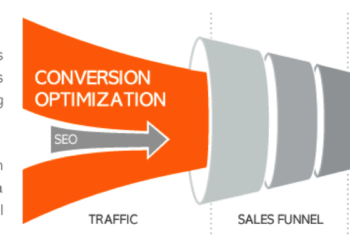Why RBAC is Crucial for Accessing and Managing Backup Files
Backup files are among the most critical digital assets an organization holds. These backups safeguard against data loss, ransomware attacks, and accidental deletions. However, improper access to backup data can itself become a significant security risk, leading to breaches or compliance violations. This is where Role-Based Access Control (RBAC) plays a vital role in securing backup environments by ensuring that only authorized personnel can access or manage backup files.
Revyz, a leader in Atlassian data management and backup solutions, integrates RBAC deeply into its platform to provide granular, secure, and auditable access to backup data. This blog explores why RBAC is indispensable for backup security and how Revyz enhances this control to protect your critical data assets.
1. What is Role-Based Access Control (RBAC)?
RBAC is a security model that assigns access permissions based on user roles instead of individual identities. The core components include:
- Roles: Defined sets of permissions aligned with job functions.
- Permissions: Specific access rights, such as view, create, restore, or delete backups.
- Users: Individuals assigned to roles.
- Role Hierarchies: Structures allowing roles to inherit permissions.
RBAC is especially suited for managing sensitive backup data because it enforces the principle of least privilege-users receive only the access necessary for their responsibilities, reducing the attack surface.
2. Why RBAC is Essential for Accessing and Managing Backup Files
Backup files are prime targets for cyberattacks, including ransomware, and insider threats. Unrestricted or poorly managed access can lead to:
- Data loss or corruption
- Unauthorized ransomware encryption of backups
- Compliance violations with data protection regulations
RBAC mitigates these risks by strictly limiting access to authorized personnel based on their roles. The benefits include:
- Enforcement of least privilege to minimize risk exposure
- Prevention of unauthorized access and accidental deletions
- Clear audit trails for compliance and forensic investigations
- Simplified management of permissions across complex backup environments
3. Implementing RBAC for Backup Management
Effective RBAC implementation requires:
- Defining specific roles for backup operations such as Backup Admin, Restore Operator, and Auditor
- Mapping precise permissions for each role, clarifying who can view, create, restore, or delete backup files
- Enforcing role segregation to avoid conflicts of interest and reduce insider threat risks
- Conducting periodic reviews to adjust roles and permissions as organizational needs evolve
4. How Revyz Enhances RBAC for Backup Security
Revyz’s backup platform is designed with security at its core, incorporating robust RBAC features:
- Supports granular control over backup access by leveraging Atlassian’s native RBAC scheme, ensuring only authorized users perform sensitive actions.
- Enables seamless integration with organizational Identity and Access Management (IAM) systems for centralized role management and automated provisioning/de-provisioning workflows.
- Provides immutable audit logs and detailed reporting to maintain transparency and support compliance audits.
- Ensures data encryption is in motion and at rest with industry-standard protocols, complementing RBAC to protect backup data from unauthorized exposure.
- Offers Bring-Your-Own-Storage (BYOS) options, giving organizations control over where backups reside while maintaining RBAC governance over access.
5. Real-World Benefits of Using RBAC in Backup Solutions
Organizations using RBAC-enabled backup solutions like Revyz experience:
- Reduced risk of ransomware and insider attacks by tightly controlling who can access or modify backups
- Faster incident response through clear role definitions that make it easy to isolate compromised accounts or permissions
- Simplified compliance with data protection standards such as SOC2 by maintaining auditable access records
- Improved operational efficiency via streamlined access management and automation of user role changes
6. Best Practices for RBAC in Backup Management
To maximize RBAC effectiveness, organizations should:
- Regularly review and update role definitions and permissions to reflect current business needs
- Rigorously enforce the principle of least privilege
- Leverage Revyz’s audit and monitoring tools to detect unauthorized access attempts or anomalies
- Train teams on RBAC policies and the importance of secure backup management
- Combine RBAC with multi-factor authentication (MFA) for an additional security layer
Conclusion
Securing access to backup files is non-negotiable in safeguarding organizational data. RBAC provides a structured, auditable, and scalable way to manage permissions, reducing risks while supporting compliance. Revyz’s integration of RBAC into its backup platform empowers organizations to enforce strict access controls, automate role management, and maintain transparency over backup operations.
If you haven’t yet evaluated your backup access controls, now is the time to consider RBAC as a core part of your security strategy and explore how Revyz can help you confidently protect your critical data assets.
This expert approach ensures your backup files are stored safely, accessed and managed securely, thanks to RBAC and Revyz’s advanced capabilities.
Also read This – The Future of Enterprise Email Security: How Businesses Are Adapting to New Threats













